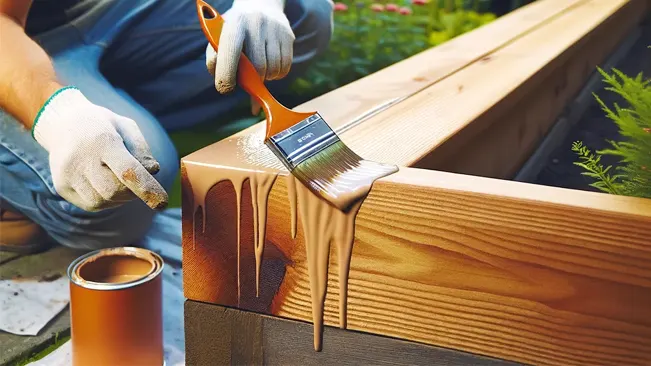Maximizing the Lifespan: How Long Do Wooden Garden Beds Really Last?
- February 5, 2024
- 0 comment
Wooden garden beds have long been cherished by gardening enthusiasts for the warmth and natural beauty they bring to outdoor areas. Yet, the question of how long they last is influenced by several important factors. The type of wood used is paramount; choices such as cedar and redwood are highly valued for their innate ability to resist rot and deter pests, thereby offering a longer service life for the beds. Additionally, the beds’ exposure to varying weather conditions and how they are cared for can greatly impact their durability.

Implementing routine care practices, including the application of sealants to protect against moisture, can further enhance their resilience. By carefully considering these aspects, gardeners can maintain their wooden garden beds as enduring, attractive elements of their outdoor spaces, enriching their gardening experience for years to come.
Introduction to Wooden Garden Beds
The Appeal of Wooden Garden Beds
Wooden garden beds effortlessly infuse our backyards with a touch of nature, merging beautifully with the outdoor landscape. Their natural appearance enhances the garden’s ambiance, complementing the surrounding greenery and floral displays. These beds not only elevate the visual appeal of our gardens but also create a harmonious and inviting outdoor space that reflects the inherent beauty of nature.
Types of Wood Used in Garden Beds
When it comes to constructing garden beds, the choice of wood is critical, with cedar, redwood, and treated pine being among the most popular options. Each type of wood brings its unique set of advantages and challenges, impacting not just the durability of the garden beds but also their overall compatibility with your gardening needs.
Factors Affecting the Lifespan of Wooden Garden Beds
Wood Type and Durability
The type of wood chosen plays a pivotal role in the lifespan of garden beds, with hardwoods like cedar and redwood offering natural decay resistance, thereby ensuring greater durability. These woods contain compounds that protect against moisture and pests, ideal for outdoor use. In contrast, softer woods may be more affordable but require chemical treatments to achieve similar longevity, raising potential environmental and health concerns. Hence, selecting the right wood is essential for balancing durability, maintenance, and ecological considerations in garden bed construction.
Environmental Conditions
Climate significantly impacts the longevity of wooden garden beds, with moisture, temperature extremes, and pests being major factors. High humidity can lead to rot, temperature shifts can cause cracking, and pests like termites can damage the wood. These environmental challenges highlight the need for selecting durable materials and employing protective measures in garden bed construction to mitigate wear and extend their lifespan in varying climates.
Maintenance and Care
Battling the effects of climate on wooden garden beds demands consistent upkeep to preserve their structure and appearance. Regular cleaning to remove debris and soil buildup is fundamental in preventing moisture retention, which can lead to rot. The application of protective sealants forms a barrier against water and UV rays, reducing the risk of warping and fading caused by temperature fluctuations and sunlight exposure. Incorporating pest repellents, whether chemical or natural, guards the wood against infestations that can compromise the bed’s integrity.
Additionally, reinforcing the beds with hardware or additional supports can mitigate structural stress over time. For gardeners seeking in-depth advice, various resources offer extensive maintenance strategies tailored to different climatic conditions. These guides can be invaluable in ensuring that wooden garden beds not only withstand the elements but also continue to enhance the garden’s aesthetic, providing a healthy environment for plants year after year.
Enhancing Durability
Choosing the Right Wood
Selecting decay-resistant woods like cedar and redwood, or properly treated lumber, is crucial for the durability of garden beds. These materials withstand rot, pests, and weather, minimizing the need for frequent maintenance. This choice supports sustainable gardening by ensuring a stable and long-lasting foundation for plant growth.
Protective Treatments and Coatings
Using the right treatments and coatings on wood effectively shields it from moisture, UV damage, and pests, significantly extending its lifespan. Sealants prevent water damage and rot, while UV-resistant coatings protect against sun degradation. Insect repellent treatments further secure the wood from pest infestations. Together, these protective measures maintain the wood’s strength and appearance, ensuring longer-lasting wooden structures in outdoor environments.
Regular Maintenance Practices
Adopting basic maintenance practices can significantly enhance the durability of your garden beds. Regular debris removal prevents moisture-related decay, while routine inspections help identify and address potential damage early on. Reapplying protective coatings, such as sealants, ensures ongoing resistance against weather, UV exposure, and pests. These simple yet effective steps are key to keeping your garden beds in excellent condition, promoting a thriving garden environment.
Real-World Longevity: What to Expect
Average Lifespan Estimates
The longevity of garden beds constructed from cedar or redwood is quite impressive, with a well-maintained bed typically lasting between 10 to 20 years. This extended lifespan is largely due to the natural properties of these woods, which include resistance to rot, decay, and insect damage. Regular maintenance, such as cleaning, applying protective finishes, and making repairs as needed, plays a crucial role in maximizing the life of these beds.
Cedar and redwood’s durability, combined with proper care, makes them an excellent investment for gardeners looking for a long-term solution for their planting needs. Their ability to withstand the rigors of outdoor conditions without succumbing quickly to the elements means that gardeners can enjoy many seasons of fruitful gardening with minimal need for bed replacement or extensive repairs.
Signs of Wear and When to Replace
Keeping a close watch on the condition of your garden beds is vital for a thriving garden. Signs of decline, such as wood becoming soft, the structure warping, or significant damage, indicate it might be time for a new garden bed. These problems go beyond just looks; they can negatively affect your plants’ health and growth. When these issues can’t be overlooked, it’s likely time to invest in a new garden bed.
A new bed not only offers a dependable environment for your plants but also enhances the visual appeal of your garden. Paying attention to your garden beds and making timely upgrades can significantly contribute to a successful and enjoyable gardening experience, keeping your garden vibrant and attractive.
Related Topics
- How to Shield Garden Bed Wood: Effective Protection Strategies
- Is Treated Wood Safe for Raised Garden Beds? An In-Depth Look
Conclusion
In conclusion, the beauty and functionality of wooden garden beds can be preserved for an extended period through diligent care and maintenance. By proactively managing moisture, UV exposure, and pests, and by regularly maintaining and repairing the beds, gardeners can ensure these natural elements continue to enhance their outdoor spaces. Adopting such maintenance practices not only extends the life of the garden beds but also contributes to a more vibrant and productive garden, enriching the gardening experience over the years.
FAQs
- What is the best type of wood for garden beds to ensure maximum longevity?
Cedar and redwood are known for their natural resistance to decay, making them excellent choices for garden beds that last longer without the need for chemical treatments. - How often should wooden garden beds be treated or sealed for optimal durability?
It’s advisable to treat or seal wooden garden beds every 2 to 3 years, depending on the wood type and the environmental conditions they’re exposed to. - Can the lifespan of a wooden garden bed be extended in areas with high humidity or frequent rainfall?
Yes, choosing rot-resistant wood types and applying waterproof sealants can help extend the lifespan of garden beds in humid or wet climates. - Are there any eco-friendly options for treating wooden garden beds?
Natural oil-based treatments, such as linseed or tung oil, provide an eco-friendly option for protecting wooden garden beds from the elements. - What are the signs that indicate it’s time to replace a wooden garden bed?
Significant rot, structural instability, and pervasive insect damage are key indicators that a wooden garden bed needs replacement. - How does soil type and quality affect the longevity of wooden garden beds?
Soil that retains excessive moisture can expedite wood decay, while well-draining soil can help extend the bed’s lifespan by keeping the wood drier. - Can painting wooden garden beds help in extending their lifespan?
While painting can provide a moisture barrier, it’s essential to use non-toxic, garden-safe paints and consider that paint may require more frequent maintenance than natural sealants. - How does the thickness of the wood used in garden beds impact their durability?
Thicker wood can provide more structural strength and resist decay longer than thinner wood, contributing to a longer lifespan for the garden bed. - Is it necessary to replace the entire garden bed if only part of it is damaged?
Not always. If the damage is localized, you might be able to replace just the affected boards or sections, extending the overall life of the garden bed. - What preventative measures can be taken to protect wooden garden beds from pests?
Applying a natural pest repellent, such as cedar oil, or installing a physical barrier, like hardware cloth at the bottom of the bed, can help protect against pests like termites and rodents.

Charles Hayes
Forestry AuthorI'm Charles Hayes, I bring over 15 years of specialized expertise in landscaping and woodworking, blending artistic design with sustainable environmental stewardship. My career, fueled by a profound passion for the natural world, encompasses extensive education and hands-on experience in creating harmonious, eco-friendly outdoor spaces and responsibly managing forest resources. Recognized for my professional standing, I am committed to continuous learning and certification in cutting-edge practices. My expertise is not only reflected in my work but also in my contributions to community projects, educational workshops, and collaborations with industry leaders. As an authoritative voice in my field, I strive to share knowledge and promote environmentally conscious approaches, making me a trusted resource in landscaping and forestry.













Leave your comment